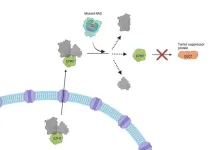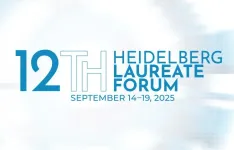(Press-News.org) This news release contains updated information and data not included in the abstract.
Research Highlights:
The sooner a lay rescuer (bystander) starts cardiopulmonary resuscitation (CPR) on a person having a cardiac arrest at home or in public, up to 10 minutes after the arrest, the better the chances of survival and brain protection, according to an analysis of nearly 200,000 out-of-hospital cardiac arrest cases in the U.S. from 2013 to 2022.
Among the study’s findings, people who received CPR within two minutes of out-of-hospital cardiac arrest had 81% higher odds of survival to release from the hospital and 95% higher odds of favorable neurological survival or survival with mild to moderate neurologic disability, compared to people who did not receive bystander CPR.
For those who did not receive bystander CPR, about 12% survived to be released from the hospital, and more than 9% survived without significant brain damage, highlighting that intervention may provide a better chance of surviving.
Researchers said these findings could be of great importance to emergency services dispatchers and policymakers to help inform public interventions for cardiac arrest.
Note: The study featured in this news release is a research abstract. Abstracts presented at the American Heart Association’s scientific meetings are not peer-reviewed, and the findings are considered preliminary until published as full manuscripts in a peer-reviewed scientific journal.
Embargoed until 4 a.m. CT/5 a.m. ET, Monday, Nov. 11, 2024
DALLAS, Nov. 11, 2024 — The sooner a lay rescuer (bystander) starts cardiopulmonary resuscitation (CPR) on a person having a cardiac arrest at home or in public, up to 10 minutes after the arrest, the better the chances of saving the person’s life and protecting their brain function, according to preliminary research to be presented at the American Heart Association’s Resuscitation Science Symposium 2024. The meeting will be held Nov. 16-17, 2024, at the Hilton Chicago Hotel in Chicago and will feature the most recent advances related to treating cardiopulmonary arrest and life-threatening traumatic injury.
Cardiac arrest, which occurs when the heart malfunctions and abruptly stops beating, is often fatal without quick medical attention such as CPR to increase blood flow to the heart and brain. More than 357,000 out-of-hospital cardiac arrests happen each year in the U.S. with a 9.3% survival rate. “Our findings reinforce that every second counts when starting bystander CPR and even a few minutes delay can make a big difference,” said Evan O’Keefe, M.D., the study’s first author and a cardiovascular fellow at Saint Luke’s Mid America Heart Institute and the University of Missouri-Kansas City. “If you see someone in need of CPR, don’t dwell on how long they’ve been down, your quick actions could save their life.”
The study analyzed nearly 200,000 cases of witnessed out-of-hospital cardiac arrest to determine whether initiating CPR within different time windows, compared to outcomes with no bystander CPR administered, made a difference in survival and brain function after hospital discharge.
“We found that people who received bystander CPR within the first few minutes of their cardiac arrest were much more likely to survive and have better brain function than those who didn’t,” O’Keefe said. “The longer it took for CPR to start, the less survival benefit one received. However, even when CPR was started up to 10 minutes after cardiac arrest, there was still a significant survival benefit compared to individuals who did not receive CPR from a bystander.”
Results also found:
People who received CPR within two minutes of out-of-hospital cardiac arrest had an 81% higher rate of survival to release from the hospital and 95% higher rate of surviving without significant brain damage compared to people who did not receive bystander CPR.
Even people who received bystander CPR up to 10 minutes after cardiac arrest were 19% more likely to survive to hospital discharge and 22% more likely to have a favorable neurological outcome than those who did not receive bystander CPR at all.
For those who did not receive bystander CPR, about 12% survived to be released from the hospital, and more than 9% survived without significant brain damage or major disabilities. When bystander CPR was initiated more than 10 minutes after cardiac arrest, bystander CPR, compared to not receiving the lifesaving assistance, was no longer associated with improved survival.
“These results highlight the critical importance of quick action in emergencies. It suggests that we need to focus on teaching more people how to perform CPR, and we also need to emphasize ways to get help to those suffering cardiac arrest faster,” O’Keefe said. “This might include more widespread CPR training programs, as well as better public access to automated external defibrillators (AEDs) and improved dispatch systems.”
O’Keefe noted that future research could explore how technology (like apps that alert nearby trained bystanders or alert dispatchers to likely cardiac arrest) may help to reduce the time to first intervention, information that could be important for emergency dispatchers and policymakers in the development of public interventions for cardiac arrest.
"This study highlights the need for prompt recognition and treatment of cardiac arrest by bystanders. Time is of the essence when a cardiac arrest occurs, and late interventions can be as ineffective as no intervention. Community education and empowerment are critical for us to save lives,” said American Heart Association volunteer expert Anezi Uzendu, M.D., an interventional cardiologist at the University of Texas Southwestern Medical Center in Dallas and a cardiac arrest survivor.
The American Heart Association urges everyone learn the lifesaving skills of CPR and join its Nation of Lifesavers®, a movement to double survival rates from sudden cardiac arrest by 2030. Being ready to act quickly could be the difference of life or death for someone experiencing a cardiac arrest.
A limitation of the study includes that the average time of arrival for emergency medical technicians (EMTs) to the person having cardiac arrest was roughly 10 minutes. This means that in this study, the people who received bystander CPR 10 minutes after their cardiac arrest were likely being compared to a group receiving professional medical attention.
Study details and background:
The study identified 160,822 witnessed out-of-hospital cardiac arrests that occurred from 2013-2022. Among the people whose data was analyzed, the average age was 64 years old, and more than 54,000 (about 34%) were women.
Researchers used data from the Cardiac Arrest Registry to Enhance Survival (CARES), a national, web-based health registry focused on helping communities improve care for and survival of out-of-hospital cardiac arrest.
The research categorized time to initiation of bystander CPR in two-minute intervals and analyzed the link between each time interval, compared to the group who did not receive CPR, with survival to hospital discharge and favorable neurological survival, or surviving with minor disabilities.
Co-authors, disclosures and funding sources are listed in the manuscript.
Statements and conclusions of studies that are presented at the American Heart Association’s scientific meetings are solely those of the study authors and do not necessarily reflect the Association’s policy or position. The Association makes no representation or guarantee as to their accuracy or reliability. Abstracts presented at the Association’s scientific meetings are not peer-reviewed, rather, they are curated by independent review panels and are considered based on the potential to add to the diversity of scientific issues and views discussed at the meeting. The findings are considered preliminary until published as a full manuscript in a peer-reviewed scientific journal.
The Association receives funding primarily from individuals; foundations and corporations (including pharmaceutical, device manufacturers and other companies) also make donations and fund specific Association programs and events. The Association has strict policies to prevent these relationships from influencing the science content. Revenues from pharmaceutical and biotech companies, device manufacturers and health insurance providers and the Association’s overall financial information are available here.
Additional Resources:
Multimedia is available on the right column of the release link https://newsroom.heart.org/news/bystander-cpr-up-to-10-minutes-after-cardiac-arrest-may-protect-brain-function?preview=df92c4872f203d62da7fda6f7b593fdf
Link to abstract; and AHA Resuscitation Science Symposium 2024 Online Program Planner
Impact Update: CPR willingness grows in the U.S., need to act remains
Could drones one day speed AED delivery to cardiac arrest scenes across the U.S.?
Learning to save lives could start as early as age 4, according to new scientific statement
Join the Nation of Lifesavers
Find a CPR course
Learn how to restart a heart with an AED
For more news at AHA Resuscitation Science Symposium 2024, follow us on X @HeartNews, #ReSS24
###
About the American Heart Association
The American Heart Association is a relentless force for a world of longer, healthier lives. We are dedicated to ensuring equitable health in all communities. Through collaboration with numerous organizations, and powered by millions of volunteers, we fund innovative research, advocate for the public’s health and share lifesaving resources. The Dallas-based organization has been a leading source of health information for a century. During 2024 - our Centennial year - we celebrate our rich 100-year history and accomplishments. As we forge ahead into our second century of bold discovery and impact, our vision is to advance health and hope for everyone, everywhere. Connect with us on heart.org, Facebook, X or by calling 1-800-AHA-USA1.
END
Bystander CPR up to 10 minutes after cardiac arrest may protect brain function
American Heart Association Resuscitation Science Symposium 2024, Abstract Or104
2024-11-11
ELSE PRESS RELEASES FROM THIS DATE:
911 dispatcher assistance improved chances of receiving bystander CPR
2024-11-11
Research Highlights:
A study of nearly 2,400 cardiac arrest cases in North Carolina found that when emergency dispatchers (telecommunicators) provided cardiopulmonary resuscitation (CPR) instructions to 911 callers, people were more likely to provide aid for both men and women.
The study’s findings indicate that when a telecommunicator provided assistance to callers, bystander CPR was performed 44% of the time on women and 40% on men, compared to 9% on women and 11% on men when telecommunicator assistance was not provided.
Researchers found the telecommunicator role critical in instructing bystanders to act quickly, possibly instrumental in reducing sex disparities ...
GLP-1, SGLT2 medications may lower stroke survivor’s risk of future heart attack, stroke
2024-11-11
Research Highlights:
In an analysis of more than 7,000 stroke survivors, those who were taking either a GLP1-receptor agonist or an SGLT2 inhibitor medication had a lower risk of a subsequent stroke, heart attack or death compared to peers who were not prescribed the medications during a three-year follow up period.
The analysis used health data from the Rochester Epidemiology Project collected from 2000 to 2022. The first GLP-1 medication was prescribed beginning in 2006, and the authors included cases beginning in 2000 to increase the power of the study, they noted.
Note: The study featured in this news release ...
TYK2 transforms tau from ‘good guy’ to a ‘bad guy’ that contributes to Alzheimer’s disease
2024-11-11
Researchers at Baylor College of Medicine, the Jan and Dan Duncan Neurological Research Institute (Duncan NRI) at Texas Children’s Hospital and collaborating institutions discovered that the enzyme TYK2 transforms the normal protein tau into one that accumulates in the brain and contributes to the development of Alzheimer’s disease in animal models. Published in Nature Neuroscience, the study suggests that partially restraining TYK2 could be a strategy to reduce tau levels and toxicity.
“Many studies have shown that the accumulation ...
Elephant seal colony declines one year after avian flu outbreak
2024-11-11
The sounds of barking elephant seals are again in the air along the breeding grounds of Península Valdés, Argentina—but it’s quieter. Almost exactly a year after a massive outbreak of H5N1 highly pathogenic avian influenza killed more than 17,000 elephant seals, including about 97% of their pups, scientists estimate that only about a third of the elephant seals normally expected here returned.
“It’s beautiful to walk the beaches now and hear elephant seals again,” said Marcela Uhart, director of the Latin America Program at the UC Davis Karen C. Drayer Wildlife Health Center within ...
While more is better, even moderate amounts of exercise may reduce risk for common heart condition
2024-11-11
Adding an extra hour every week of physical activity may lower the chance of developing the most common type of irregular heartbeat (arrythmia) by 11%, a new study shows.
Led by researchers at NYU Langone Health, the investigation focused on atrial fibrillation, a condition in which the heart’s upper two chambers beat rapidly and irregularly instead of at a consistent pace. If left untreated, this can lead to stroke, heart failure, and other issues. While past studies have linked exercise to reduced risk of this type of arrhythmia, nearly all of these analyses have relied on the participants’ ...
Researchers uncover new role of mutant proteins in some of the deadliest cancers
2024-11-11
Researchers at the National Institutes of Health (NIH) and their collaborators have discovered a new way in which RAS genes, which are commonly mutated in cancer, may drive tumor growth beyond their well-known role in signaling at the cell surface. Mutant RAS, they found, helps to kick off a series of events involving the transport of specific nuclear proteins that lead to uncontrolled tumor growth, according to a study published November 11, 2024, in Nature Cancer.
RAS genes are the second most frequently mutated genes in cancer, and mutant RAS proteins are key drivers of some of the deadliest cancers, ...
Patients may become unnecessarily depressed by common heart medicine
2024-11-11
All patients who have had a heart attack are typically treated using beta blockers. According to a Swedish study conducted earlier this year, this drug is unlikely to be needed for those heart patients who have a normal pumping ability. Now a sub-study at Uppsala University shows that there is also a risk that these patients will become depressed by the treatment.
“We found that beta blockers led to slightly higher levels of depression symptoms in patients who had had a heart attack but were not suffering from heart failure. At the same time, beta blockers have no life-sustaining function for this group of patients,” says Philip Leissner, a doctoral student in cardiac ...
Largest T cell clinical trial in solid tumors heralds new era in precision immunotherapy
2024-11-11
The largest ever clinical trial of T cell therapy (a type of cell-based immunotherapy) for solid tumours has been completed.
Led by a Singapore clinician-investigator, the global, international, multisite trial recruited 330 advanced nasopharyngeal (NPC) cancer patients in 23 sites across Singapore, Malaysia, Thailand, Taiwan and the United States.
The trial did not show an overall survival benefit for the entire patient cohort but a subset analysis combining outcomes of US, Singapore and Taiwanese sites, showed better progression free survival ...
Call for applications: Participation in the 12th Heidelberg Laureate Forum for Outstanding Young Researchers in Mathematics and Computer Science
2024-11-11
The application process for the 12th Heidelberg Laureate Forum has begun!
Young researchers in mathematics and computer science from all over the world can apply for one of the 200 exclusive spots to participate in the Heidelberg Laureate Forum (HLF), an annual networking conference. The HLF offers all accepted young researchers the unique opportunity to interact with the laureates of the most prestigious prizes in the fields of mathematics and computer science. Traditionally, the recipients of the Abel Prize, the ACM A.M. Turing Award, the ACM Prize in Computing, ...
A milestone for reproductive medicine: Producing viable eggs from undeveloped oocytes through In vitro technology
2024-11-11
Mature egg cells, or oocytes, are essential for fertilization in assisted reproductive technologies. However, some ‘denuded’ oocytes, or those lacking the protective granulosa cell layer, fail to mature. Now, in a new study by researchers at Shinshu University, the team has developed a method to culture mature oocytes from these denuded oocytes in the lab. This innovative approach holds promise for overcoming significant challenges in reproductive science, marking a major advancement in fertility research.
Assisted ...
LAST 30 PRESS RELEASES:
Exposure to natural light improves metabolic health
As we age, immune cells protect the spinal cord
New expert guidance urges caution before surgery for patients with treatment-resistant constipation
Solar hydrogen can now be produced efficiently without the scarce metal platinum
Sleeping in on weekends may help boost teens’ mental health
Study: Teens use cellphones for an hour a day at school
After more than two years of war, Palestinian children are hungry, denied education and “like the living dead”
The untold story of life with Prader-Willi syndrome - according to the siblings who live it
How the parasite that ‘gave up sex’ found more hosts – and why its victory won’t last
When is it time to jump? The boiling frog problem of AI use in physics education
Twitter data reveals partisan divide in understanding why pollen season's getting worse
AI is quick but risky for updating old software
Revolutionizing biosecurity: new multi-omics framework to transform invasive species management
From ancient herb to modern medicine: new review unveils the multi-targeted healing potential of Borago officinalis
Building a global scientific community: Biological Diversity Journal announces dual recruitment of Editorial Board and Youth Editorial Board members
Microbes that break down antibiotics help protect ecosystems under drug pollution
Smart biochar that remembers pollutants offers a new way to clean water and recycle biomass
Rice genes matter more than domestication in shaping plant microbiomes
Ticking time bomb: Some farmers report as many as 70 tick encounters over a 6-month period
Turning garden and crop waste into plastics
Scientists discover ‘platypus galaxies’ in the early universe
Seeing thyroid cancer in a new light: when AI meets label-free imaging in the operating room
Neutrophil-to-lymphocyte ratio may aid risk stratification in depressive disorder
2026 Seismological Society of America Annual Meeting
AI-powered ECG analysis offers promising path for early detection of chronic obstructive pulmonary disease, says Mount Sinai researchers
GIMM uncovers flaws in lab-grown heart cells and paves the way for improved treatments
Cracking the evolutionary code of sleep
Medications could help the aging brain cope with surgery, memory impairment
Back pain linked to worse sleep years later in men over 65, according to study
CDC urges ‘shared decision-making’ on some childhood vaccines; many unclear about what that means
[Press-News.org] Bystander CPR up to 10 minutes after cardiac arrest may protect brain functionAmerican Heart Association Resuscitation Science Symposium 2024, Abstract Or104




